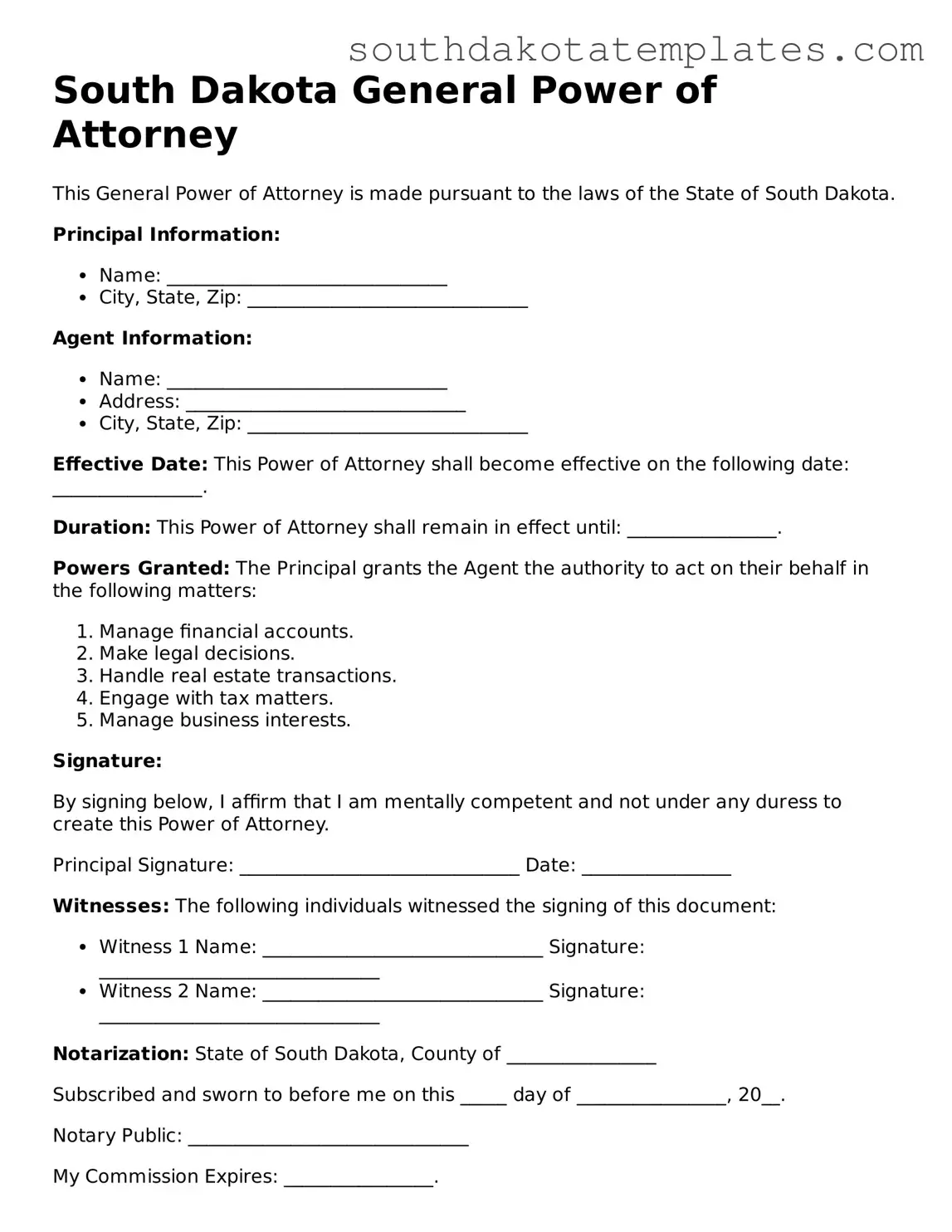In South Dakota, a General Power of Attorney (GPOA) serves as a crucial legal document that empowers an individual, known as the principal, to designate another person, referred to as the agent, to manage their financial and legal affairs. This form is particularly valuable for those who may wish to ensure their interests are protected in situations where they are unable to make decisions themselves, such as during illness or extended travel. The GPOA grants the agent broad authority, allowing them to handle a wide range of tasks, from managing bank accounts and paying bills to making investment decisions and filing taxes. Importantly, the principal can specify limitations or conditions on the agent's powers, tailoring the document to fit their unique needs. While the GPOA is effective immediately upon signing, it can also include provisions that make it effective only under certain circumstances, such as incapacitation. Understanding the nuances of this form is essential for anyone considering its use, as it not only facilitates smooth management of affairs but also provides peace of mind for the principal and their loved ones.
